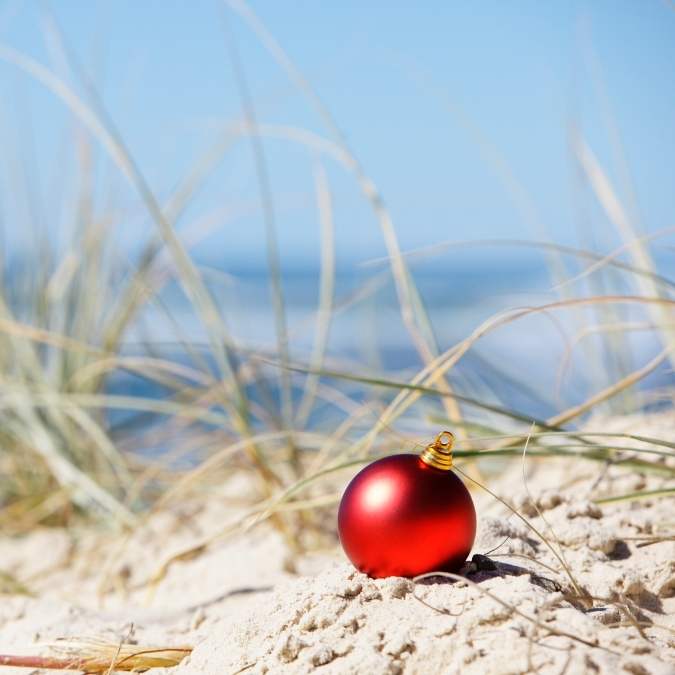
When most of us imagine Christmas, we picture shimmering snowflakes, cozy fireplaces, frosted windows and a chill in the air. But tens of millions of people around the world celebrate the holiday in places where snow is rare or entirely absent. From tropical islands to desert towns, the spirit of Christmas adapts to local climate, culture and community. In this article, we’ll explore how Christmas is celebrated in countries without snow, highlighting traditions, meals, decorations and experiences — and showing how the holiday’s heart lies not in snow, but in shared meaning.
Why a “Snowy Christmas” Isn’t Universal
The image of a white Christmas comes largely from Northern Hemisphere traditions and popular media. Yet, many parts of the world lie in tropical or subtropical zones, near the equator or in seasonal climates where December is warm, humid or even hot. Moreover:
- Climate and geography shape festive mood and practicalities—snow might be nonexistent, but holiday spirit remains.
- Local cultures adopt and adapt Christmas in ways meaningful for their environment (beaches instead of snow banks, warm evenings instead of fires).
- Globalisation has spread many symbols of Christmas (trees, lights, carols) but locals often blend those with indigenous or climate-sensitive customs.
Thus, celebrating without snow is not a “second-choice Christmas” — it’s simply the local expression of the same core values: connection, generosity, joy, reflection.
Tropical & Warm-Climate Christmas Traditions
Caribbean Islands: Vibrant Markets, Parades and Beach Gatherings
In Caribbean nations like Jamaica, Christmas is a lively mix of community markets, music, street parades and outdoor fun. In Jamaica, for instance:
- The Grand Market on Christmas Eve is a major cultural event, with vendors, crafts, food and festive shopping under the warm evening sky.
- The tradition of Junkanoo (or Jonkonnu) street parades features masked dancers, drums and costumes, often during Boxing Day or the holiday week.
- Families might gather outdoors, in courtyards or near the coast, enjoying warm weather rather than rushing indoors.
What stands out: instead of seeking indoor warmth, the warmth is already there—so the celebration is more outward, communal, street-based and inclusive of outdoor spaces.
Indian Ocean & African Islands: Tropical Décor and Summer Celebrations
In places like Mauritius or the Seychelles, Christmas falls in warm summer months, yet the festive spirit is strong. For example:
- In Mauritius, December brings holiday markets, craft fairs, concerts and beachside dinners, blending Western Christmas symbols with local culture.
- The Seychelles also report a tropical festive season where seafood, tropical fruits and outdoor celebrations dominate.
- Rather than fireplaces and snow, celebrations may include swimming, beach picnics, seaside family meals.
Southeast Asia: Festive Flavour in Warm Weather
Countries like Thailand and others with warm December climates also hold Christmas celebrations—though often influenced by tourism and expatriate communities. For example: festive lights in cities, mall decorations, dinners under the open sky.
In the Philippines (warm climate though December may be cooler), traditions include parols (star lanterns) and outdoor lighting contests.
Sub-tropical and Desert Regions: Adapting Traditions
In regions with mild winters or even deserts (parts of Australia, Middle East, North Africa, Latin America near the equator), Christmas adaptation includes:
- Outdoor barbecues or gardens rather than indoor roasts.
- Early evening gatherings as daylight may be longer and weather dry.
- Using local flora for decorations (palm trees, holiday plants) instead of fir trees.
- Combining cultural festivals and Christmas (for example, in Latin America, La Posada or Novena de Aguinaldos in warm areas).
Thus, even when snow is absent, the seasonal transition, religious meaning and social gathering carry forward.
Common Themes & Variations in Snow-less Christmases
Décor and Ambiance
- Outdoor lighting becomes more prominent: In lieu of snow-reflected lights, homes and streets use bold lighting, lanterns or stars.
- Local plants: instead of fir trees, families may use banana trees, palm trees or local evergreens (as seen in tropical India).
- Beach/sea themes: Some seaside regions decorate boats, seaside palms or poolside trees.
- Minimal or heat-aware indoor décor: Since heavy indoor heating isn't necessary, indoor decorations may emphasise cooling, patio space or open-air living rooms.
Food and Festive Meals
- Warm-climate menus: Instead of roast turkey in a chilly room, meals may include grilled seafood, tropical fruits, cold desserts, outdoor feasts. For instance, in Jamaica, curried goat, fried chicken and sorrel drink during Christmas dinner.
- Seasonal produce: Tropical regions may rely on fruit, coconut, local spices, produce available in December climate.
- Communal feasts outdoors: Given mild weather, families may gather in gardens, patios, beaches rather than indoors.
Community Gatherings and Outdoor Celebrations
- Street parades: Warmer weather enables more outdoor events: markets, parades, masquerades (Junkanoo).
- Beach/sea holiday: In places like Caribbean or Indian Ocean islands, families may incorporate beachside activities, boat lighting or seaside services.
- Longer daylight/celebration time: Without harsh cold, evenings can be long, celebrations open-air, visits extended.
- Inclusive street-based events: Outdoor climate allows public squares, open-air concerts and markets which might not be feasible in snow-heavy climates.
Religious Services and Cultural Rhythms
- Many warm-climate countries celebrate midnight Mass or Christmas Eve services outdoors or in open churches.
- Regional pre-holiday novenas or gatherings (Latin America’s Novena de Aguinaldos) are held year-round in warm zones.
- While snow might mark the change in temperate zones, in warm climates the significance is more about calendar, community and cultural rhythm rather than temperature shift.
What We Can Learn From These Traditions
Celebrating Christmas without snow teaches us important lessons:
- Adaptation is key: Traditions evolve depending on climate, culture and environment. A meaningful holiday does not require snow—it requires presence.
- Outdoor space matters: Warm climates highlight how celebration can extend outdoors—family time, community markets and public gathering.
- Food and décor reflect place: Using local produce, local plants and local settings makes the holiday authentic and sustainable.
- Inclusivity and global understanding: Realising that many people celebrate Christmas under palm trees helps us broaden our own expectations and include alternate holiday styles.
- Meaning over meteorology: The heart of the season is connection, reflection and generosity—not necessarily snow and silence.
Tips If You’re Celebrating Christmas in Warm Weather for the First Time
If you’re experiencing a snow-less Christmas (on holiday, relocated, or living in a warm region), here are practical ideas:
- Embrace the setting: Have a beachside brunch, an outdoor dinner, decorate a patio or garden.
- Use local flora: Decorate with native plants (palm fronds, banana leaves, tropical flowers) if fir trees aren’t available.
- Outdoor lighting: Use string lights under trees, on verandas, in open spaces to evoke festive feel.
- Local menu twist: Incorporate local seasonal produce, seafood or fresh drinks instead of traditional heavy roasts.
- Early evening gatherings: Enjoy longer daylight and perhaps schedule festive time later in the day when it’s cooler.
- Warm weather entertainment: Instead of snow-based activities (sledding, hot cocoa indoors), do evening beach walks, swim, outdoor games, open-air carols.
- Respect local culture: If you’re visiting, explore how locals celebrate—join a Grand Market, local parade or outdoor service.
- Send home a postcard of your unique setting: A photo with decorations by the sea is a memorable holiday card.
By fitting the holiday to your environment and taking inspiration from warm-climate traditions, you’ll create a celebration that’s authentic, joyful and suited to your surroundings.
Conclusion
Snow is a lovely image for Christmas, but it is by no means essential for celebration. Whether you’re under palm trees, on a sun-lit beach, sitting in a garden or walking in a city with warm nights, the spirit of the season thrives when people connect, share meals, reflect and give. In countries without snow, Christmas becomes about light rather than frost, community rather than isolation, outdoor joy rather than indoor retreat.
What matters is that you choose a setting that fits you, engage with local customs or invent your own, and remind yourself that the heart of the holiday lies in presence, not precipitation. So whether you’re sipping a cold drink by the ocean or lighting lanterns under the stars, may your Christmas be warm, meaningful and beautifully yours. 🌴✨
Sources
- “Christmas Activities In The Caribbean,” Island Routes.
- “A Tropical Christmas in Mauritius,” VillaNovo, 2025.
- “Mele Kalikimaka! 8 Tropical Christmas-Time Traditions,” Fodor’s Travel.
- “Christmas Traditions in Jamaica,” Couples Resorts UK.
- “Christmas in the Tropics: All of the Spirit, None of the Snow,” Live & Invest Overseas.

